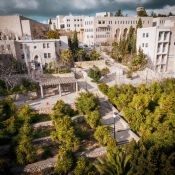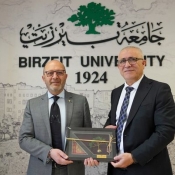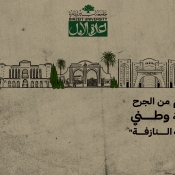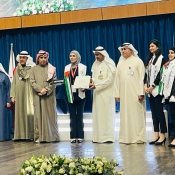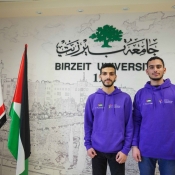Highlights of Birzeit University’s research publications in February 2018
Birzeit University’s recent research efforts surged in 2017, increasing to 118 research papers and studies published in world-renowned academic and scientific journals. This research-focused trend is continuing into 2018, with six papers authored by Birzeit University’s researchers – joined by prominent scholars and researchers from around the world –published in some of the most well-known journals in February.
Fekri Samarah and Mahmoud A. Srour investigated the prevalence and clinical impact of factor V Leiden G1691A (FVL) and prothrombin G20210A mutations among Palestinian sickle cell disease (SCD) patients in “Factor V Leiden G1691A and prothrombin G20210A mutations among Palestinian patients with sickle cell disease.”
The paper, published in BMC Hematology, examined 117 sickle disease patients, of which 59 patients suffer from sickle cell anemia, 33 suffer from sickle β-thalassemia, and 25 suffer from sickle cell trait. The control group against which the 117 patients were compared comprised 118 healthy individuals.
The researchers concluded that factor V Leiden G1691A was more prevalent among sickle cell anemia patients compared to the control patients. It was also associated with higher incidence of disease complications among SCD patients.
Rowayda Ali, a student in the Environmental and Water Sciences Master’s Program, and Manal Taha, a student in the Environmental and Water Engineering Master’s Program had two of their papers published in the International Journal of Environmental Studies. The papers, done as part of their master’s studies, were supervised and co-authored by Dr. Rashed Al-Sa'ed.
In the first paper, “Pilot-scale anaerobic digester for enhanced biogas production from poultry manure using a solar water heating system,” Ali and Al-Sa’ed outlined the construction of a pilot-scale (0.5 m3) anaerobic digester in a poultry farm located in Beit Ur Al Foqa.
The researchers observed that the poultry manure proved to be a suitable substrate for the digester, producing 39.95 cubic meters of biogas. The generated biogas produced 788 MJ of energy, which was used for farm heating during the period of the study. The researchers concluded, “Anaerobic digestion of poultry manure constitutes a bio-resource for both energy and nutrients. It is therefore an environmentally-sound technology with zero waste emissions.”
The second paper, “Application potential of small-scale solar desalination for brackish water in the Jordan Valley, Palestine,” was authored by Al-Sa'ed and Taha. The researchers studied the feasibility of using solar energy coupled to reverse osmosis units to desalinate the brackish water in the Jordan Valley.
The paper argued that the proposed reverse osmosis units are suitable for the project because of their low energy requirements, market availability, size, and convenience of installation in the difficult conditions of the Jordan Valley.
The researchers concluded the study with a recommendation that 162 agricultural wells be upgraded, and suggest that further studies on design capacity and efficiency of desalination facilities be carried out.
In “Document similarity for Arabic and cross-lingual web content,” Ali Salhi and Adnan H. Yahya investigated cross-lingual similarity based on adapted-cross-lingual-setting explicit semantic association. The performance of cross-lingual similarity, where one language is Arabic, is tested in the paper against a monolingual counterpart through a number of text chunk sizes.
Published in Communications in Computer and Information Science, the researchers explained the infrastructure used in the paper, described with the possible sources of weaknesses in the mechanism used, and concluded with suggestions on possible improvements.
Mohammed Z. Salem, Samir Baidoun, and Rania F. Almuzaini investigated utilizing the “demarketing” approach to improving water conservation in the Gaza Strip in “Water consumption demarketing strategies with reference to the Gaza Strip, Palestine.”
In the paper, which was published in the Polish Journal of Environmental Studies, the researchers attempted to alleviate the water shortage problem by identifying the main items of a marketing mix. A questionnaire was to collect primary data regarding factors affecting the demarketing of water consumption in the Gaza Strip was developed and handed out to 400 randomly selected participants.
The researchers also designed a promotion strategy create awareness concerning the economic and social benefits of demarketing water consumption, water distribution (place), price, and product.
Haytham Salhi, Feras Odeh, Rabee Nasser, and Adel Taweel analyzed and benchmarked distributed cache systems, in “Benchmarking and performance analysis for distributed cache systems: A comparative case study,” which was published in Lecture Notes in Computer Science.
In the paper, the researchers examined the use of several benchmarks and chose one for performance analysis, then analyzed the performance of Hazelcast and infinispan, two popular open-source distributed cache systems.
The researchers concluded that the performance of a distributed cache is greatly impacted by the number of simultaneous clients accessing the cache as well as the size of the data that the cache manages.

